The built-in speakers that come with most Macs are pretty darn good, especially (or so I’m told) on the iMac Pro. But if you want a high-end, expensive (about $700) set-up, you can pair two HomePods for some intense audio.
Apple says that setting up your stereo pair is easy and that “when you set-up a second HomePod in the same room, you’re prompted to form a stereo pair.” That’s true under ideal conditions.
Let’s assume that you are indeed working under ideal conditions and the set-up goes smoothly. Then your two HomePods communicate with each other so that only one responds to Siri requests. If both responded, you’d have a problem, of course.
Even though these two speakers act as one, each HomePod communicates with the other so that only one speaker responds to Siri requests. Unless this changes with the upcoming macOS Catalina, Apple says you can’t set up a HomePod with the Home app on Mac. Instead, you’ll need an iPhone, iPad, or iPod touch updated to iOS 11.4 or later, HomePod speakers with iOS 11.4 or later. And your Mac needs to be running macOS Mojave. Once all your software is up to date, make sure that your iPhone and Mac are on the same Wi-Fi network. Then, on your iPhone, iPad, or iPod touch:
- Make sure that both HomePods are in the same (virtual) room in the Home app.
- Open the Home app, press and hold HomePod, then tap Settings.
- Tap Create Stereo Pair.
- Choose a second HomePod to use as a stereo pair.
![]()
- Tap a HomePod on the right or left side to identify it. Tap the arrows button (see the icon above) to swap them to the correct left and right channel.
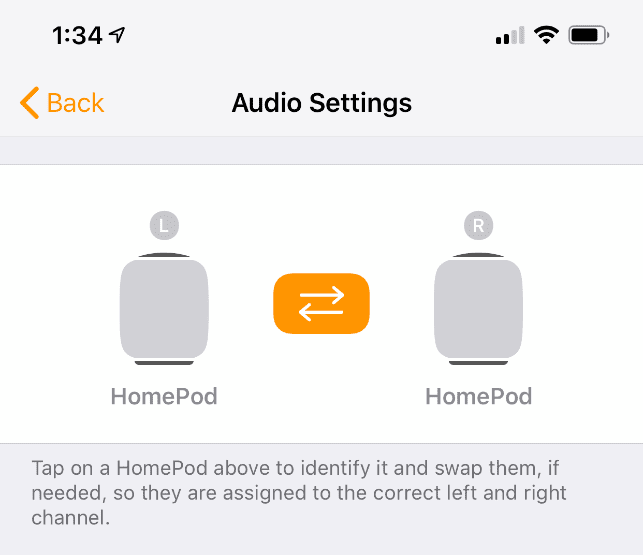
- To ungroup a HomePod stereo pair on your Mac:
- In the Home app, double-click the grouped HomePod speakers.
- Click Settings in the upper-right corner.
- Scroll to the bottom and click Ungroup Accessories.
I hope all this works for you. If you’re having problems, you may run into my situation, in which the Home app on my iPhone kindly told me: “HomePod features like airPlay and Personal Request may not work on ‘NETGEAR06’ because it does not support peer-to-peer connections.”
If this happens, you may have to disconnect and reconnect your router. This forces both HomePods to reattach to the network.
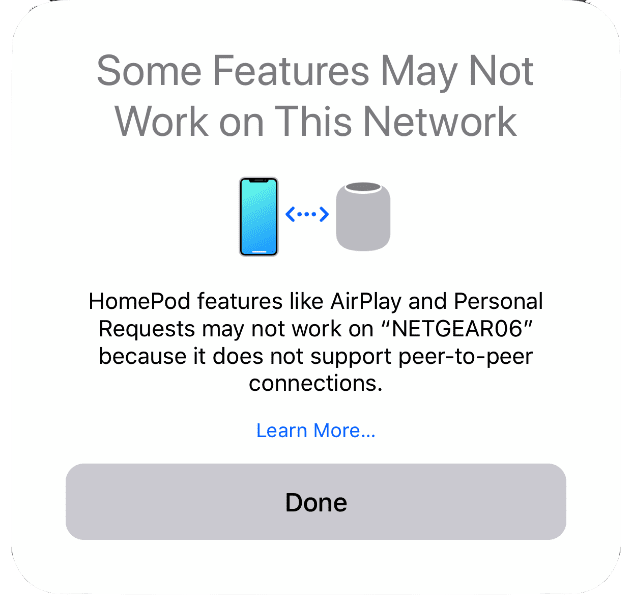
It’s also possible that the HomePods won’t sync properly. If this happens, you may hear different sounds from different speakers. Or you can experience a reverb/echo effect between the two HomePods.
If this is happening, make sure that both the speakers are using the latest iOS update that supports AirPlay 2. If that doesn’t work, reboot both the speakers.
If that doesn’t work, unpair and re-pair the HomePods. If that doesn’t work, you try resetting both. And if that doesn’t work, you’ll probably have to call Apple support.
If you already have one HomePod and need another to try this out, or if you want to grab a pair of HomePods, head over to MacSales.com!
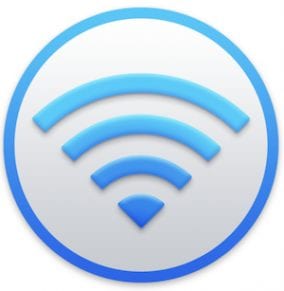
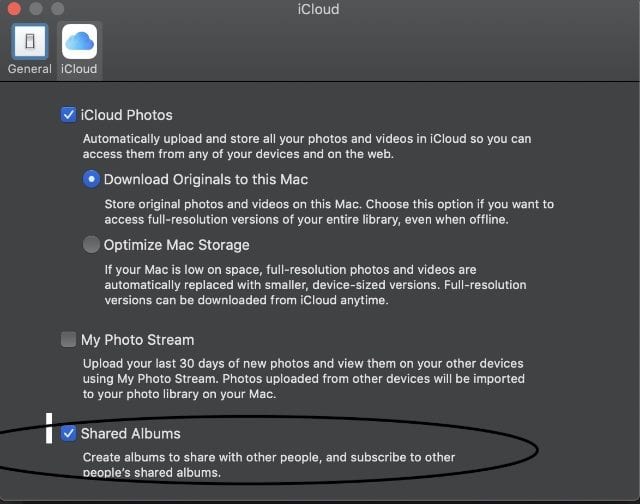

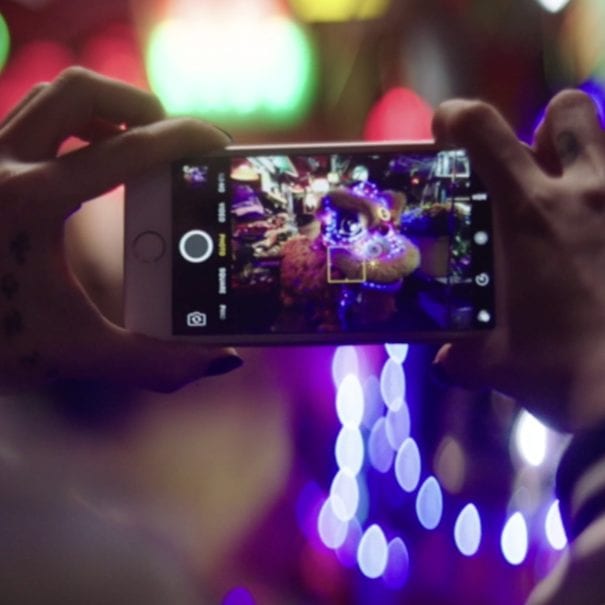






The issues with using a stereo set of homepods as the audio for all audio from your Mac is shameful. The only reason I purchased these was to use with my Mac. I had an old setup that worked great for 20 years that cost me $150. It was stereo with a subwoofer. When it was time to replace I decided I like wireless and chose the very expensive Homepod route. It was a mistake! It looks like this will still not work with properly in Big Sur.
Apple is becoming an awful company that no longer represents high quality easy to use stuff. I bought into the mess that is Apple 2020.
I have read about a hack that utilizes AirFoil. I don’t want to have to run extra software to do this. We shouldn’t have to…
“We shouldn’t have to…” … I couldn’t agree more.
I too experienced the issue with a Home Pod pair not pairing or totally crashing when I tried to make a stereo pair. I also experienced the message relating to my wifi network not supporting peer to peer connections.
After 2 or 3 hours trying various options and almost putting the HomePods back in the box and returning them, I managed to get it to work. I had to disconnect the wifi access point and reboot, reboot the router, reset the Home Pods, set them up separately and then pair them and then wait 30 minutes before the Home App on my iPhone recognised them as a stereo pair (prior to this it would only see them as separate speakers and I could not connect to either via Airplay despite using the App to set them up as a stereo pair in the first place) and then It would work, only to find that my Apple TV would randomly disconnect from them which was cured by rebooting my Apple TV. In other words this is a hopeless mess.
Apple have made this a complete and utter disaster and if it was not for the fact that they sound so good they would have been returned. This is not a cheap solution for the average person, and the fact is that the setup process basically does not work unless conditions are prefect (whatever they are since the setup process usually fails with no clue as to what happened).
I just wish we could use BlueTooth as an option or even, he said somewhat heretically, a physical connection. Apple try to be too clever and the automated process has a lot of bugs, This is Apple at its worst and with Siri not being that bright and this complex and error prone setup process means that Home Pods are never going to be popular. I have two colleagues who returned them when the setup process failed or they simply disappeared from the network. We need reliable solutions not this horrific setup process that is neither reliable nor likely to be robust over time. Fiddling with your iPhone to try and reconnect your HomePod when you are playing music at a dinner party is not a guarantee for success as a product.
in my situation the iMac only presents the Left or right option in the pulldown menu. I “do” get the stereo pair on my iphone, and I “do” get the stereo pair on my iTunes on my iMAC, but I can not play other content (streaming Amazon) and have the ability to select stereo pair – only one of the other…